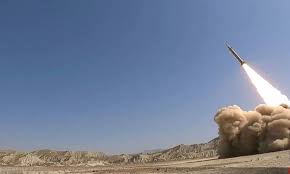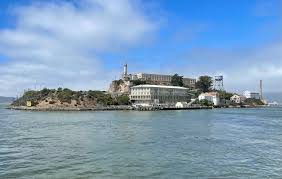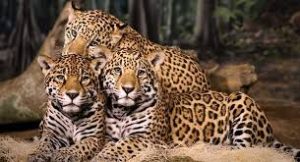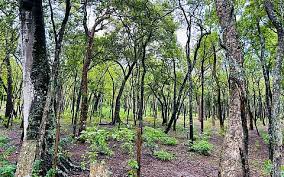Today’s Current Affairs: 6th May 2025 for UPSC IAS exams, State PSC exams, SSC CGL, State SSC, RRB, Railways, Banking Exam & IBPS, etc
Table of Contents
ECINET:

In a significant step towards streamlining electoral services, the Election Commission of India (ECI) will be launching a single-point digital platform called ECINET.
- ECINET is a single-point digital platform being developed by the Election Commission of India (ECI).
- It is a new user-friendly digital interface for the electors and other stakeholders such as the election officials, political parties and civil society.
- It will integrate and reorient over 40 of ECI’s existing mobile and web applications.
- ECINET will subsume existing apps like the Voter Helpline App, Voter Turnout App, cVIGIL, Suvidha 2.0, ESMS, Saksham, and KYC App.
- ECINET will have an aesthetic User Interface (UI) and a simplified User Experience (UX) by providing a singular platform for all electoral-related activities.
- This move is also designed to alleviate the burden of the users for downloading and navigating multiple apps and remembering different logins.
- ECINET will enable users to access relevant electoral data on their desktops or smartphones.
- The data on ECINET will be entered solely by the authorized ECI official.
- It would ensure that the data made available to the stakeholders is as accurate as possible
- The data provided through ECINET will be strictly aligned within the legal framework established by the Representation of People Act 1950, 1951, Registration of Electoral Rules 1960, Conduct of Election Rules 1961, and instructions issued by ECI from time to time.
- ECINET is expected to benefit nearly 100 crore electors and the entire electoral machinery comprising over 10.5 lakh Booth Level Officers (BLOs), around 15 Lakh Booth Level Agents (BLAs) appointed by Political Parties, nearly 45 Lakh Polling Officials, 15,597 Assistant Electoral Registration Officers (AEROs), 4,123 EROs, and 767 District Election Officers (DEOs) across the country.
Ghassem Basir Missile:

Iran recently unveiled a new solid-fuel ballistic missile named Ghassem Basir.
- Ghassem Basir Missile is a new medium-range ballistic missile (MRBM) developed by Iran.
- It is designed to strike targets located more than 1,200 kilometers
- The missile’s length is estimated to be approximately 11 meters, with an overall weight of roughly 7 tons.
- The missile’s airframe is apparently manufactured using carbon fiber composite materials, reducing structural mass and radar cross-section.
- The warhead is reported to weigh approximately 500 kilograms.
- The propulsion system is based on solid fuel, which enables quicker launch readiness and more stable storage conditions compared to liquid-fueled alternatives.
- It can reach speeds up to Mach 12.
- The guidance system features a thermal imaging sensor, allowing the missile to identify and home in on targets using heat signatures during its terminal flight phase.
- Additionally, the missile is equipped with a maneuverable reentry vehicle (MaRV) that separates from the booster and is designed to decrease drag, reduce radar observability and improve ballistic efficiency.
- It can reportedly be launched from mobile transporter-erector-launchers (TELs), including platforms that resemble civilian trucks.
Alcatraz Island:

The US President recently directed his administration to rebuild and enlarge Alcatraz, the infamous prison that has been shuttered for more than 60 years on a remote California island off the coast of San Francisco.
- Alcatraz Island, also known as ‘The Rock,’ a rocky island in San Francisco Bay, off the coast of California, in the United States.
- It occupies an area of 22 acres (9 hectares).
- Sold in 1849 to the U.S. government, Alcatraz was the site of the first lighthouse (1854) on the coast of California.
- In 1859 the first permanent army troops were stationed at Alcatraz.
- Two years later it became a military prison.
- In 1907 it was named the Pacific Branch of the U.S. Military Prison.
- The army left the island in 1933.
- Alcatraz served as a federal (national) prison from 1934 to 1963.
- The prison was able to hold more than 330 convicts in the cells, however, it was rare for more than 260 prisoners to occupy the island at one time.
- Eventually, the cost of maintaining the prison resulted in its closing in March 1963.
- In 1972 Alcatraz became part of the newly created Golden Gate National Recreation Area. It is now open to the public and is a popular tourist destination.
Sanjay Gandhi National Park : Census

A recent census reveals at least 54 leopards in Sanjay Gandhi National Park, highlighting coexistence of wildlife amid urbanization and conservation efforts.
- Sanjay Gandhi National Park (SGNP) is a large protected area near Borivali in the northern part of Mumbai.
- It is situated partly in Thane District and in Mumbai Suburban District of Maharashtra.
- In the early days, the park was known as Krishnagiri National Park. However, in 1974 the name of this park was changed to ‘Borivali National Park’ and in 1981 to ‘Sanjay Gandhi National Park’ to pay tribute to late Indian leader Sanjay Gandhi.
- It covers an expansive area of 103 sq.km., making it one of the largest parks in the world located within city limits.
- The Kanheri caves, which are located within the park, were carved out by Buddhist monks between the 1st century CE and 10th century CE.
- The caves served as monasteries, temples, schools, and living quarters for the monks.
- They also contain some of the finest examples of Buddhist art and architecture in India.
- They were chiseled out of a massive basaltic rock outcropping.
- Besides, the park also has two artificial lakes, namely Tulsi Lake and Vihar Lake. The two lakes together supply a significant amount of water to South Mumbai.
- Leopard, sambar, chital, barking deer, rusty spotted cat, hyena, common palm civet, small Indian civet, Indian crested porcupine, Indian hare, Indian flying fox, common langur, and bonnet macaque.
- The park also boasts 251 species of birds and a large variety of butterflies.
India has released its first genome-edited rice varieties:

India has released its first genome-edited rice varieties namely ‘DRR Dhan 100 (Kamala)’ and ‘Pusa DST Rice 1’ aimed at enhancing yields, climate resilience, and resource efficiency without introducing foreign DNA.
- They have been developed by ICAR using advanced CRISPR-Cas9 genome-editing technology. No foreign DNA is introduced, making them comparable to traditionally bred crops.
- DRR Dhan 100 (Kamala) is based on the popular Samba Mahsuri variety. Edited using Site Directed Nuclease 1 (SDN1) technology targeting the Cytokinin Oxidase 2 (CKX2) gene (Gn1a) to improve grain number.
- It results in early maturity (Harvested 15–20 days earlier), drought-tolerant, high nitrogen-use efficiency.
- Pusa DST Rice 1 is based on Maruteru 1010 variety and enhances drought and salt tolerance. Developed through SDN1 genome-editing, it targets the drought and salt tolerance (DST) gene.
- It results in 30.4% higher yield in coastal salinity, 14.66% higher in alkaline soils and 9.67% higher in inland salinity.
- It is a genome-editing technique that introduces precise changes in DNA using enzymes called nucleases.
- SDN-1 introduces small insertions/deletions without using foreign DNA, while SDN-2 uses a template DNA (similar to the host) to introduce specific desired changes.
Biological Diversity (Access and Benefit Sharing) Regulation, 2025:

The National Biodiversity Authority (NBA) notified the Biological Diversity (Access to biological Resources and Knowledge Associated thereto and Fair and Equitable Sharing of Benefits) Regulation 2025 to ensure fair benefit sharing from the use of biological resources.
Key Highlights of the Biological Diversity (Access and Benefit Sharing) Regulation, 2025:
- All users who have an annual turnover of over Rs 1 crore need to share a statement with information on the resources used per year.
- For high-value biological resources like red sanders, sandalwood, agarwood, and threatened species under the Biodiversity Act, 2002 benefit sharing must be at least 5% of the sale or auction amount, and can exceed 20% for commercial use.
- The 2025 Regulation replaces the 2014 Guidelines, expanding the scope to include DSI, which can now be considered part of genetic resources, unlike the earlier framework.
- DSI refers to the digital representation of genetic sequences derived from Deoxyribonucleic acid (DNA), Ribonucleic acid (RNA), or proteins of organisms. It’s essentially the digital code of an organism’s genetic makeup.
- The Regulation mandates benefit-sharing for researchers and intellectual property applicants, with 10-15% of the collected benefits retained by the NBA.
- Cultivated medicinal plants are exempt from benefit sharing.
- This exemption stems from the Biological Diversity (Amendment) Act 2023, which promoted medicinal plant cultivation and eased compliance for AYUSH practitioners.
Metal-Free Catalyst for Hydrogen Fuel Production:
Indian researchers have developed a metal-free catalyst for hydrogen fuel production using mechanical energy, marking a major breakthrough in clean energy innovation.This aligns with India’s National Green Hydrogen Mission and advances sustainable hydrogen technology.Metal-Free Catalyst for Hydrogen Fuel Production is a donor-acceptor covalent organic framework (COF) that functions as a metal-free piezocatalyst. Capable of splitting water molecules under mechanical pressure (vibrations, movement) to produce hydrogen gas (H₂).Developed by: Jawaharlal Nehru Centre for Advanced Scientific Research (JNCASR), Bengaluru, led by Prof. Tapas K. Maji. In collaboration with IISER Pune and Wrocław University of Science and Technology, Poland.
Nabakalebara Ritual:
The recent inauguration of the Digha Jagannath Temple in West Bengal has sparked controversy over its designation as “Jagannath Dham” and allegations of using leftover sacred wood from Puri’s Nabakalebara ritual for idol-making.Nabakalebara (meaning “new body”) is a sacred ritual associated with Lord Jagannath’s idols in Puri, Odisha.It involves the replacement of wooden idols of Lord Jagannath, Balabhadra, Subhadra, and Sudarshana with new ones. Conducted every 12 or 19 years, based on the lunar calendar (when two Asadha months occur in a year).
What is the PoC?
The UIDAI, in collaboration with NIC and NTA, conducted a successful Proof of Concept (PoC) of Aadhaar-based face authentication during NEET-UG 2025 to strengthen exam security and prevent impersonation.PoC is a pilot test using Aadhaar-linked face authentication to verify candidates in real-time during NEET-UG 2025. Developed By: Unique Identification Authority of India (UIDAI), in collaboration with: National Informatics Centre (NIC) and National Testing Agency (NTA).
Orange Economy:
Prime Minister of India championed the ‘orange economy’ at the World Audio Visual and Entertainment Summit (WAVES) 2025 in Mumbai, urging global companies to “Create in India, Create for the World.”The orange economy, also called the creative economy, includes economic activities driven by culture, art, media, innovation, and intellectual property.It spans film, music, design, gaming, publishing, performing arts, advertising, and digital content creation.
Organization of Islamic Cooperation : raised concerns over the tense situation between India and Pakistan
In its recent statement, the Organization of Islamic Cooperation (OIC) raised concerns over the tense situation between India and Pakistan and called for restraint and dialogue.Organization of Islamic Cooperation (OIC) is the second largest intergovernmental organisation after the United Nations, with the membership of 57 states, covering four continents. The Organization was established upon a decision of the historical summit, which took place in Rabat, Kingdom of Morocco on 25 September 1969, following the criminal arson of Al-Aqsa Mosque in occupied Jerusalem. It aims to preserve Islamic values, safeguard and defend the national sovereignty and independence of member states, and contribute to international peace and security.
Red Admiral Butterfly:
The Red Admiral butterfly (Vanessa atalanta) has been sighted for the first time in India’s Dhauladhar mountain range in Himachal Pradesh.The Red Admiral butterfly belongs to the Nymphalidae family and has a wing span ranging from 67-72mm (male to female).Morphologically, the Red Admiral resembles the Indian Red Admiral (Vanessa indica) but can be distinguished by its narrower, deeper crimson discal band and the consistent presence of a diagnostic spot in the upper forewing (a feature absent in the Indian species).The Red Admiral butterfly is found in North and South America, Europe, and Asia (no confirmed records from China, Mongolia, or Afghanistan).
69th Foundation Day of the Enforcement Directorate:
The 69th Foundation Day of the Enforcement Directorate (ED), held in New Delhi, reaffirmed the agency’s pivotal role in combating economic offences and money laundering, as India strives toward the vision of Viksit Bharat 2047. Established on 1st May 1956, as the ‘Enforcement Unit’ under the Department of Economic Affairs to tackle violations of the Foreign Exchange Regulation Act (FERA), 1947, and renamed as the Enforcement Directorate in 1957. Its headquarters is located in New Delhi.
Transferred to the Department of Revenue in 1960, the ED now functions under the Union Ministry of Finance, enforcing the criminal provisions of the Prevention of Money Laundering Act, 2002 (PMLA) and Fugitive Economic Offenders Act, 2018 (FEOA), and civil provisions of Foreign Exchange Management Act (FEMA). The ED is headed by a Director (not below the rank of Additional Secretary, to the Government of India). Core functions of ED include curbing money laundering, financing of terrorism, and organised crime, ensuring economic security.




